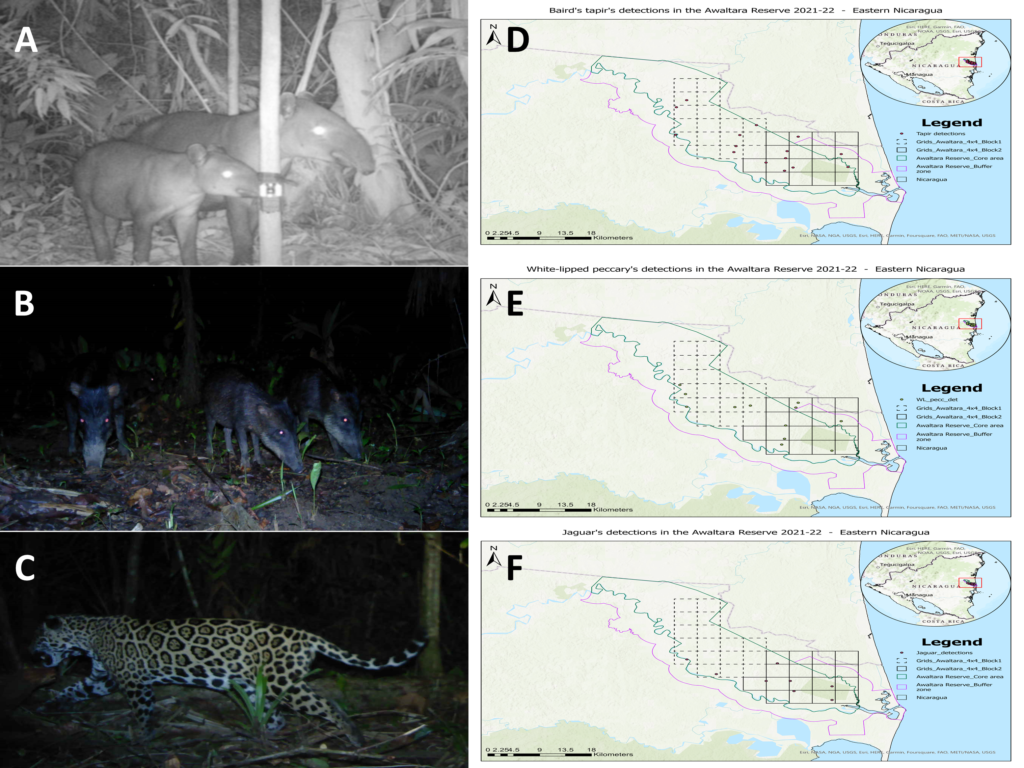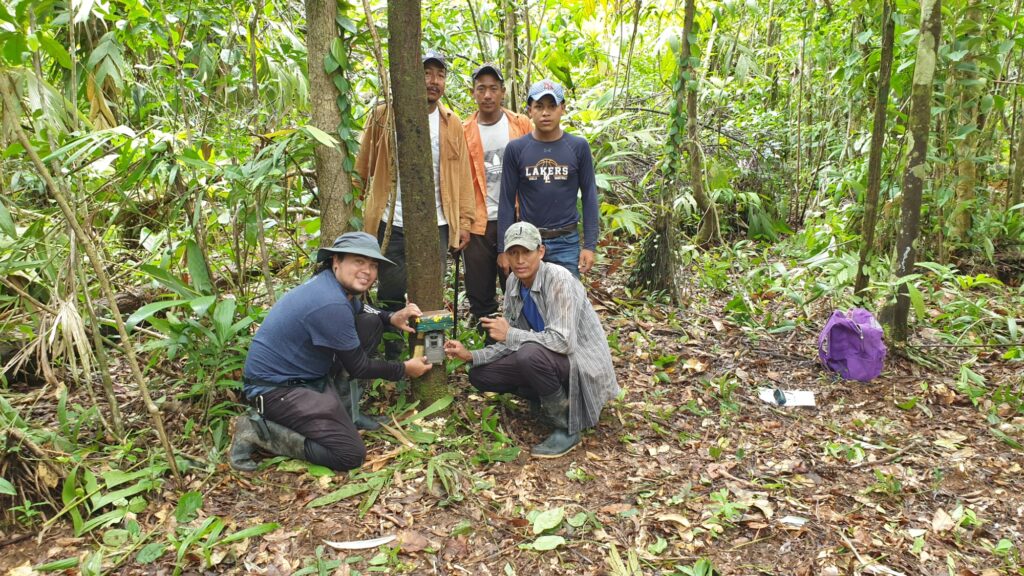Conserving Critically Endangered Wildlife in the Awaltara Territory, a Biologically and Culturally Diverse Region of Southeast Nicaragua
By: Armando Dans
Department of Fisheries and Wildlife – Michigan State University
Nicaragua Tapir Project director – IREMADES/URACCAN-Nicaragua
ATBC Navjot Sodhi Conservation Research Award 2022
The forests of the east coast of Nicaragua are highly diverse and considered one of the last core habitats in the nation for critically endangered large mammals, such as Baird’s tapir (Tapirus bairdii), jaguar (Panthera onca), and white-lipped peccary (Tayassu pecari). These species’ remaining habitat overlaps extensively with the autonomous territories of indigenous and Afro-descendant peoples of the Caribbean coast. However, this region is also one of the most deforested areas in Latin America owing to changes in land use and agricultural expansion, that threaten biodiversity in the Caribbean autonomous territories. Agricultural expansion in these territories is being driven by non-indigenous cattle ranchers migrating from all around the country into the forested areas of this region and establishing pastures, many illegally. This social crisis has increased habitat fragmentation and poaching rates, amplifying human-wildlife conflicts in this biologically and culturally diverse region of Nicaragua.
With support from the Navjot Sodhi Award provided by the Association for Tropical Biology and Conservation, the Nicaragua Tapir Project in the IREMADES institute (URACCAN University) has been collaborating with the Awaltara Territorial Government and the Municipality of “La Desembocadura del Rio Grande” for more than five years on conservation efforts to protect this area. In conjunction with regional authorities, the Awaltara territory is declaring the Awaltara Reserve as a national protected area. The next step for the Awaltara Reserve is to design a management plan that helps protect and preserve the high biodiversity in the Reserve. However, in order to do so, biodiversity surveys are necessary.
The Navjot Sodhi Award provided critical funding to help expand the IREMADES biodiversity survey efforts involving camera trapping of terrestrial vertebrates. The data from these surveys is essential for developing biodiversity management and conservation plans that protect some of the last remaining habitats for critically endangered large terrestrial mammals in this region.
The core objective of the project was to increase the sample size for a capture-recapture study in the Awaltara territory. This was achieved by acquiring a dozen Bushnell trail cameras, which were deployed in an intensive camera trap sampling grid. From July 2021 to January 2022, camera traps documented the presence of 38 species, including several critically endangered species such as Baird’s tapir (Tapirus bairdii), jaguar (Panthera onca), white-lipped peccary (Tayassu pecari), and the giant anteater (Myrmecophaga tridactyla). These findings underscore the rich biodiversity of the Awaltara Territory and the urgent need for its protection. The next phase of fieldwork, planned for early 2024, will involve more intensive sampling using a refined camera trap grid system, to obtain more robust estimates of species densities and distribution.
The project stands as a testament to collaborative conservation efforts, involving various stakeholders including the Nicaraguan Tapir Project, IREMADES/URACCAN, and local indigenous communities. Funding provided by the Association for Tropical Biology and Conservation supported crucial data collection that was essential to the continuation of these collaborations and conservation efforts.

Nicaragua critical endangered terrestrial mammals detected in the Awaltara territory, Baird's tapir (A, D), White-lipped peccary (B, E), Jaguar (C, F)

Armando Dans (blue navy shirt and grey hat) and his field technicians during a camera trapping expedition in the Awaltara territory.



